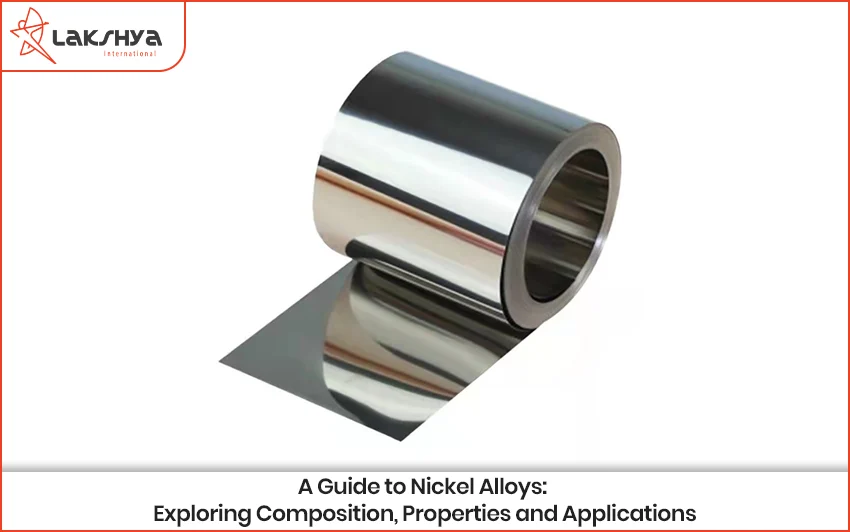Why is Hastelloy Special?
It all comes down to the secret ingredients: molybdenum and chromium. When you mix these into nickel, it gives Hastelloy incredible superpowers against corrosion. It can laugh in the face of strong acids, shrug off oxidizing agents, and not even break a sweat in high temperatures.
Compared to other high-performance metals out there, like Incoloy, Hastelloy often comes out on top when the environment gets really, really rough. It’s the go-to choice when you need a material that can truly handle the heat (and the chemicals!).
How Is Hastelloy Made?
Typically, alloys are created from the prime ingredients found in Hastelloy (nickel, chromium, and molybdenum) heated first, then, when melted, other metallic and non-metallic content is added to the molten mixture to facilitate extreme corrosion resistance.
The general process to create Hastelloy generally consists of 6 different steps, which include:
- Mixing
- Pulverizing
- Pressing (in a magnetic field)
- Sintering
- Heat Treatment & Solidification
- Surface Treatment (if designated)
While the process for producing Hastelloy typically follows the general steps as described above, the percentages variably change the composition and properties, making each one more suitable for particular applications.
Why Hastelloy Works Better in Corrosive Environments
Hastelloy Materials and Key Properties
Extraordinary corrosion Resistance in Media Reducing and Oxidizing
High-temperature strength stays constant at very intense heat.
Great weldability perfect for complex fabrication
Resistance to Corrosion from Stress Pitting and Crashing
Thermal Stability: Designed for Fluctuating Thermal Conditions
Durability: Constant Performance Even in fairly demanding industrial environments
Hastelloy Composition
| Element | Role/Notes |
| Nickel (Ni) | 50% to 70% |
| Molybdenum (Mo) | Strengthens resistance to reducing agents |
| Iron (Fe) | Not too much present |
| Chromium (Cr) | Increases resistance to oxidizing surroundings |
| Cobalt (Co) | Improves high-temperature performance |
| Tungsten (W) | In some grades for particular corrosion resistance |
| Copper (Cu) | In some grades for particular corrosion resistance |
| Overall Summary | These components cooperate to offer outstanding protection in harsh environments |
Hastelloy Grades
Hastelloy C Grades
- Hastelloy C-4 has many favorable characteristics, such as corrosion resistance (oxidation and reduction), high temperature and thermal resistance, and toughness.
- Hastelloy C-22 is primarily made up of nickel, chromium, molybdenum, and tungsten, and is resistant to corrosion by all types of deterioration of all corrosion forms which includes-pitting, crevice and stress corrosions. Its resistance also extends to aqueous corrosions such as nitric acid and wet chlorine.
- Hastelloy C-276 has good anti-oxidizing corrosion well as a reduction of up to 18% concentration and aqueous – chlorides. Its use extends to many detrimental corrosive chemicals and elements such as acids, chlorine, sea water etc.
- Hastelloy C-2000 is made up of mostly nickel(55%) including some chromium, copper, carbon, and silicon.
Comparison of Hastelloy Grades and Their Applications
| Grade | Key Feature | Common Applications |
| C-22 | Oxidizing media resistance | Chemical processing |
| C-276 | Broad chemical resistance | Waste treatment, pulp & paper |
| C-4 | High-temp oxidation resistance | Heat exchangers |
| B-2 | Excellent reducing conditions | Hydrochloric acid plants |
Applications of Hastelloy in Industry
- Aerospace and Aviation Components
Because of its great strength and resistance to oxidation at high temperatures, Hastelloy finds employment in engine components, turbine blades, and exhaust ducts in aerospace.
- Offshore and marine engineering
- Chemical Processing and High-Temp Conditions
Chemical facilities depend mostly on Hastelloy for reactor vessels, distillation columns, and scrubbers—where regular exposure to acidic and oxidizing compounds is necessary.
- Waste Treating and Pollution Control
Hastelloy Material Comparison to Other Alloys
Hastelloy vs. Inconel – Key Differences
| Feature | Hastelloy | Inconel |
| Primary Alloying Element | Nickel + Molybdenum | Nickel + Chromium |
| Best For | Corrosive environments | High temperature + oxidation |
| Weldability | Excellent | Good |
| Resistance | Chemical corrosion | Heat and oxidation |
Choosing the Correct Hastelloy Material for Your Needs: Industry Demand Factors
When selecting the appropriate Hastelloy grade, think on:
- Type of corrosive surroundings: mixing, reducing, oxidizing, needed mechanical strength
- Operating temperature rangeWeldability and manufacture requirements
- Comparative study of cost against performance
Certifications and Guidelines for Quality Control
Make sure your Hastelloy parts follow international standards including: ASTM B622/B619/B626 for smooth tubes and pipes.
- Boiler and Pressure Vessel Code asme
- Nace MR0175/ISO 15156 – for sour service settings
- Certified manufacturing sources under ISO 9001
Future Directions and Novelties in Hastelloy Materials
Recycling of Nickel-Based Alloys: Sustainability.
Finally, why is Hastelloy Material Crucially Important for High-Performance Industries?
Selecting the correct Hastelloy grade will make all the difference in performance, safety and operational lifetime whether your project is a high-performance chemical plant, a maritime system, or aircraft.
So, with all these different types of Hastelloy out there, each one boasting its own special set of skills perfect for various jobs, it can feel like choosing the right one is a bit of a puzzle. That’s why we at Lakshay Steel are here to help! To make sure you get the perfect Hastelloy grade for your specific project and unlock its full potential, reach out to our team of experts today for a personalized consultation! We’re a full-service custom metal manufacturer, and we’re ready to guide you every step of the way.




